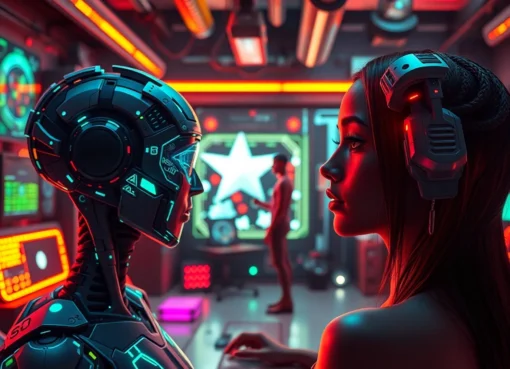Revolutionizing Visual Creativity: The Rise of Nano Banana AI and Its Impact on Image Editing

Revolutionizing Visual Creativity: The Rise of Nano Banana AI
In the rapidly evolving world of artificial intelligence, few innovations have generated as much excitement and curiosity as the emergence of nano banana ai. Marketed as Google’s groundbreaking AI image editor, Nano Banana AI claims to surpass all existing tools by integrating advanced reasoning capabilities that emulate human-like understanding of images. While traditional image editing tools like Flux Kontext and Gemini 2.0 Flash offer basic manipulation features—such as cropping, color adjustments, and background swapping—Nano Banana AI positions itself as a paradigm shift, combining deep contextual comprehension, perfect consistency, 3D spatial awareness, and logical reasoning to deliver results that are not just visually appealing but contextually accurate and semantically meaningful.
Understanding the Need for Advanced AI in Image Editing
As digital content creation continues to dominate communication, marketing, entertainment, and education, the demand for smarter, more intuitive image editing solutions has skyrocketed. Conventional tools, while user-friendly, often lack the depth of understanding necessary to execute complex edits seamlessly. For example, changing background scenes or adjusting perspectives can sometimes lead to inconsistencies or unnatural results, especially when the AI fails to grasp the contextual relationship between objects within an image.
Enter Nano Banana AI, which claims to redefine what AI-powered image editing can achieve. Unlike its predecessors, it doesn’t just perform superficial edits; it “thinks” about images—understanding spatial relationships, object identities, and contextual nuances. This enables it to perform complex tasks such as maintaining the integrity of a person’s pose and facial expressions while changing backgrounds, accurately resizing or repositioning objects in 3D space, and ensuring that edits remain logical and consistent throughout the process.
Comparing Nano Banana AI with Competitors: Features and Performance
The competitive landscape of AI image editing is crowded, with tools like Flux Kontext and Gemini 2.0 Flash making strides in basic image manipulation. However, these platforms primarily focus on surface-level edits—adjusting colors, cropping, or applying filters—without an in-depth understanding of the image content. Their performance, often measured by the accuracy of edits and the preservation of original elements, tends to hover between 20% and 70%, depending on complexity.
In stark contrast, Nano Banana AI claims to achieve an astounding 95-99% accuracy in complex editing tasks. This leap in performance is attributed to its proprietary reasoning engine, which incorporates deep understanding of the image context, spatial relationships, and logical consistency. For example, in background replacement scenarios, Nano Banana AI can swap scenes while maintaining the subject’s pose, lighting, and perspective—something most competitors struggle with or cannot do at all.
Additionally, Nano Banana AI emphasizes perfect consistency across multiple edits. If a user modifies an image multiple times, the AI retains the core attributes, ensuring that the subject remains recognizable, and the modifications are coherent. This level of reliability is crucial for professional applications, such as advertising campaigns, film post-production, and virtual staging, where accuracy and consistency are paramount.
How Nano Banana AI Uses Advanced Reasoning and Contextual Understanding
At the heart of Nano Banana AI’s revolutionary capabilities lies its sophisticated reasoning system. Unlike traditional AI models that rely heavily on pattern recognition and surface-level data, Nano Banana AI employs a multi-layered approach that mimics human cognitive processes. It analyzes the image not just pixel-by-pixel but in terms of spatial and semantic relationships.
For instance, when asked to change an object’s color or move an element within a scene, Nano Banana AI interprets the role of that object in the broader context—considering shadows, lighting, perspective, and the interaction with other objects. It understands that a chair in a room isn’t just a shape but part of a spatial environment, and any modifications respect the physical constraints of that environment.
This reasoning ability extends to understanding user intent. If a user requests a “more vibrant sunset behind the mountain,” the AI not only identifies the scene components but also evaluates the desired aesthetic, color palette, and atmospheric effects, delivering a result that aligns with artistic intent rather than just technical feasibility.
The Technology Behind Nano Banana AI: Deep Learning, Spatial Awareness, and Logical Reasoning
The technological backbone of Nano Banana AI is a convergence of cutting-edge deep learning models, 3D spatial awareness, and logical reasoning algorithms. Its architecture integrates multiple neural network layers trained on massive datasets encompassing diverse visual environments, enabling the AI to understand and manipulate complex visual scenes with remarkable fidelity.
Deep Learning and Neural Networks
The foundation is built on advanced deep learning models that process vast amounts of image data. These models learn not only to recognize objects but also their relationships, lighting conditions, textures, and contextual cues. This enables the AI to perform nuanced edits that maintain realism.
3D Spatial Awareness
Unlike most AI tools that treat images as flat, Nano Banana AI incorporates 3D spatial understanding. This allows it to reposition objects, change perspectives, or simulate depth effects convincingly. For example, when adjusting the angle of a car in a photo, the AI maintains the correct proportions and shadows, creating a seamless, realistic result.
Logical Reasoning and Contextual Comprehension
The core innovation is its reasoning engine, which interprets complex user instructions and applies logical constraints to ensure coherence. It can infer missing information, predict the outcome of edits, and verify the plausibility of changes before execution, reducing errors and enhancing user confidence.
Target Audience and Pricing Structure
Recognizing the diverse needs of users, Nano Banana AI offers a flexible pricing model designed to cater to everyone from casual creators to large enterprises. Its tiered subscription plans include:
Basic Plan – $29/month
Designed for hobbyists and individual content creators, this plan provides access to core editing features, limited daily edits, and basic AI reasoning capabilities.
Pro Plan – $49/month
Aimed at professional designers, marketers, and small studios, this tier unlocks advanced editing tools, higher daily limits, priority processing, and enhanced reasoning features for complex edits.
Enterprise Plan – Custom Pricing
For large organizations, advertising agencies, and media companies, the enterprise option offers tailored solutions, API integrations, dedicated support, and unlimited or high-volume usage to support large-scale projects.
The platform emphasizes affordability without compromising on performance, asserting that the superior accuracy (95-99%) justifies the investment, especially for high-stakes professional work.
The Future of AI in Visual Creativity: Opportunities and Challenges
As Nano Banana AI and similar advanced tools continue to evolve, the landscape of visual creativity faces both exciting opportunities and significant challenges. The potential for AI to democratize high-quality image editing is immense, enabling individuals without technical skills to produce professional-grade visuals effortlessly. Businesses can streamline workflows, reduce costs, and accelerate project timelines.
However, this rapid advancement raises ethical questions about authenticity, copyright, and the potential misuse of AI-generated images. Ensuring transparency, maintaining artistic integrity, and establishing industry standards will be critical as these technologies become more sophisticated.
Moreover, the integration of AI with other emerging technologies like augmented reality , virtual reality , and real-time rendering promises to usher in a new era of immersive visual experiences. These innovations will require ongoing research, responsible deployment, and collaboration across industry stakeholders to maximize societal benefits.
Conclusion: Why Nano Banana AI Sets a New Standard in AI-Powered Image Editing
In summary, Nano Banana AI represents a significant leap forward in AI-driven image editing. Its ability to understand images contextually, reason logically, and maintain consistency across complex edits positions it well ahead of competitors. The platform’s technological sophistication, combined with its flexible pricing and broad target audience, makes it a versatile tool for both casual users and enterprise clients.
As the digital world continues to demand smarter, more reliable, and more creative visual solutions, Nano Banana AI stands out as a true paradigm shift—an AI that doesn’t just generate pretty pictures but thinks about images the way humans do. This breakthrough marks the dawn of a new era where AI doesn’t just assist in creation but actively understands, interprets, and enhances visual storytelling.
For those interested in exploring the cutting edge of AI image editing, the future is undeniably bright. As the buzz around google nano banana and its innovative capabilities continues to grow, it becomes clear that this technology will shape the next generation of digital creativity, setting standards that will redefine what is possible in visual arts and beyond.


